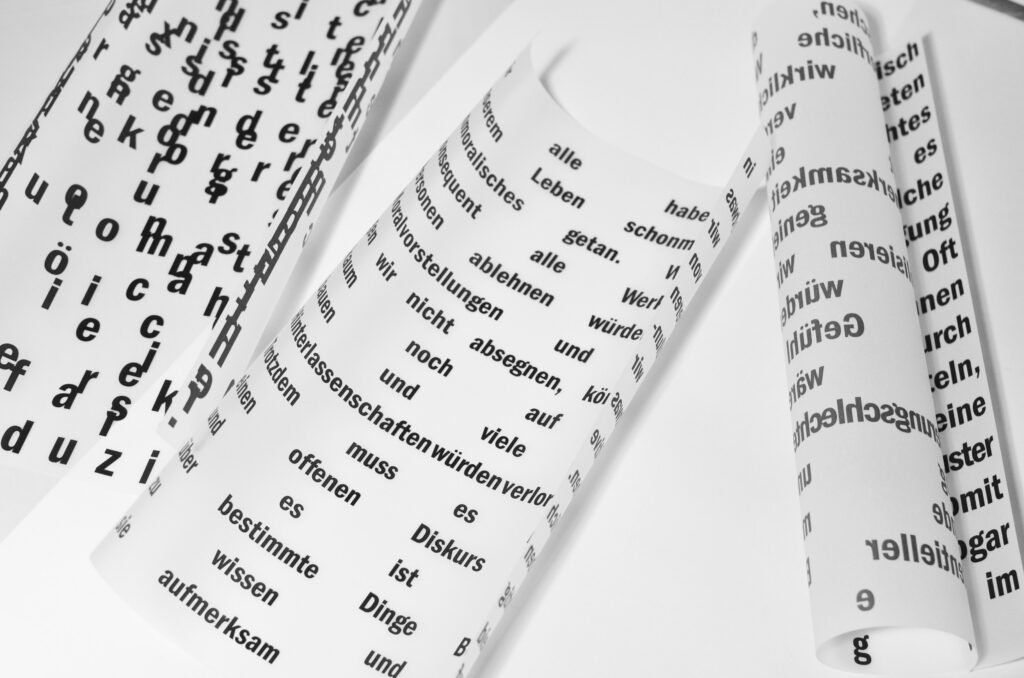Landing your dream career starts with writing up an effective resume that makes you stand out. A good resume will get you through the first hurdle of job hunting – the chance to interview with a potential employer!
Getting started can be overwhelming so before you make any mistakes that will cause you time, here are 5 things to consider before putting your achievements on paper:
1. Using a template to design your resume

Unless you’re already a savvy designer yourself, designing your resume can be a daunting task for anyone. The first step is to consider what your resume should look like so that it fits the job description you’re applying for.
A resume for an engineer will look vastly different from a resume for a creative designer so it’s important to tailor your resume according to the specific role or industry.
Using a resume template can be a clever hack if you want to get a resume created easily and quickly. The perk of free resume templates is that they are accessible to almost anyone with an internet connection – that also means you won’t be the only one using them.
If you use one without any customization, you’ll be left with a resume that may look good, but unfortunately unmemorable. We highly recommend modifying your resume design to suit your personal branding.
Even so, resume templates are a great jumping-off point to start building your resume. You can get started using templates from Microsoft Word, Google Docs, Novoresume, or Canva.
2. Choosing a resume format
Once you have a general design in mind, the next step is to consider the formatting of your resume. Employers or recruiters may request resumes in different formats so it is wise to have your resumes in different forms ready to go.
Here are the pros and cons of the different resume formats. Consider these before settling for the ones that work for you and the position you’re after:
Word Document:
Word Documents are arguably one of the most convenient ways to create a resume as a job seeker.
Pros
- Applicant tracking systems (ATS) are able to read and screen your resume easily
- No complex technical skill needed to design your resume
- Easy and quick to use
Cons
- Hiring managers may face formatting issues and misalignment when opening your resume file
- Resume design possibilities can be limited
Plain text:
Keeping your resume in a plain text format can be great when sending applications via email. Although it isn’t a common practice anymore (most employers will request your resume to be sent as a file), a resume in plain text format will be great to keep as backup for future resume revamps.
Pros
- Can be inserted into the body of an email
- Easily readable by applicant tracking systems
Cons
- No formatting or design
- Possible issues with text spacing
PDF:
PDF is the most common format for sending and receiving resumes these days. It is what we recommend using on the Hiredly platform too! Here’s why we prefer PDFs:
Pros
- Compatible with both Mac and PC systems
- No risk of viruses
- No formatting issues
- Resumes can be designed and written in other formats such as Word or Canva before saving as PDF
- Today’s applicant tracking systems can now read PDF files. Just make sure you don’t save your resume as an image.
More on our preferred format in this video:
3. Fonts you should use on your resume

The importance of picking a format is using one that makes your resume as readable to both the hiring managers and the software they use as possible. We recommend using fonts that are simple, easy to read, and commonly found in all devices (eg. Arial, Helvetica, Calibri).
You may think using unique fonts will set your resume apart from the rest, but you risk making your resume unreadable – whether it be due to its complicated design, or the fact that it doesn’t show up on the employers’ device.
To ensure further readability, use a maximum of 2 different font types (1 for your header, and the other for the body text) and keep to a standard font size of 12.
4. Use bullet points whenever you can
Recruiters go through hundreds of applications and resumes when looking for the right candidate and your job is to make it easy for them to spot you as the one they’re looking for!
Use bullet points when listing out your experiences, achievements, education, etc. This will not only make your resume easier and quicker for recruiters to read but for you to write too. Get straight to the point by mentioning keywords that reflect the descriptions of the role you’re applying for.
5. Use the reverse chronological order

When it comes to writing an effective resume, you should always be listing your experiences, achievements, or education in reverse chronological order. A reverse chronological resume means the most recent experience will be placed first, followed by the least recent ones.
It helps employers see your career progression more clearly and quickly determine if you have the qualifications needed for the role you are applying for. It also helps that your more recent experiences and achievements are most likely more significant than the ones prior.
Since the reverse chronological order is the most familiar for employers and hiring managers, listing your achievements in chronological order will lead them to read your lowest qualification first and assume you are less qualified for the position than you actually are.
= = =
